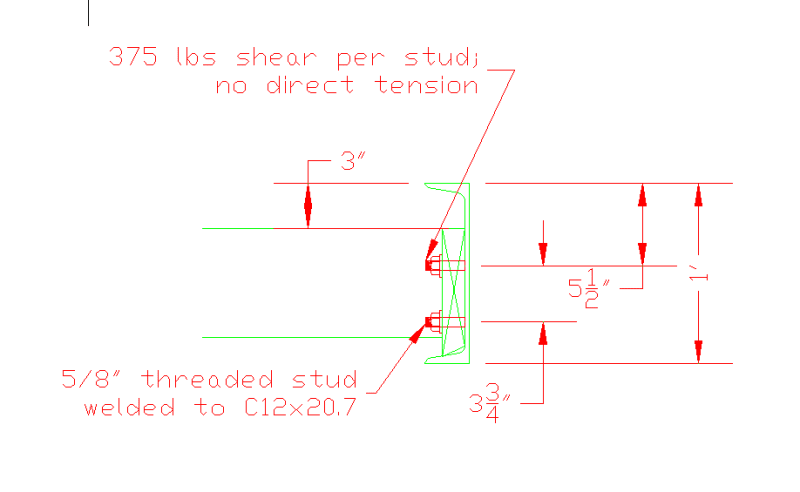Ron247:
You say…, “I am having the bottom of the nailer set on the channel flange but I am not relying on that in my calcs.” I would do and think just the opposite of your thinking. The bearing on the flg. is a much more positive load transfer path than wood bearing on a few stud holes. While the studs may take some load in shear, depending upon the accuracy of the hole drilling for them, the edge bearing of the 2x nailer is a certainty, as long as it is fit pretty well. I would have them make two rips on the edge of the 2x nailer: one to comform with the slope of the top of the bot. flg., they should measure that in the field; then a second 45° chamfer to clear the radius btwn. the flg. and web in the “k” area. It is a little fiddly, but it is the right way to do it. Now, you say you have 375lbs. per stud, say 24” o/c, times 2 studs, that’s 375lbs./ft., or 375/(12” x .75 or 1” nailer width), that’s 31psi bearing on the nailer edge. Then, the studs are there to hold the nailer in place, if they do a good job of drilling the holes. Set the nailer on the studs, and hit each stud location with a hammer (for hole layout), paying some attention to the vert. position of the nailer w.r.t. its final postion on the flg. The studs may see a little shear, as they bear on an ill placed hole or two or a little tension as they stabilize the C12, but otherwise the gravity load is taken to the bot. flg.
As for bolt yield modes, if that was part of your question, I’d say the stud is basically fixed at the C12 web (~ .28” thk.), and its bearing on the wood hole (side piece, nailer) would be akin to Modes IIIm or IIIs. But, I don’t think that’s much of an issue here, since you shouldn’t get the movement/slippage needed to bring side bearing in the holes into play.


